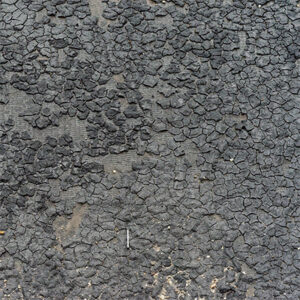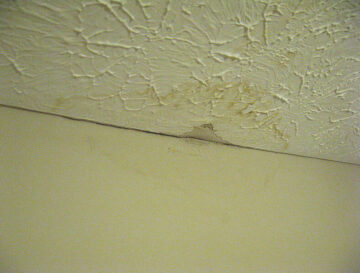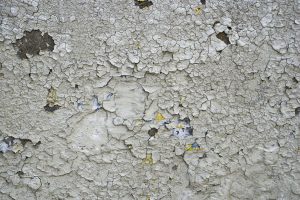Most flat roofing problems can be solved proactively – just make sure you use a professional and experienced roofer to install your roof, use the most suitable materials for your building, and ensure regular inspection and maintenance are undertaken to prevent any small issues from becoming much bigger problems.
Table of contents
Flat roof problem #1: Ponding water
Compared to pitched roofing, flat roofs do not drain very well. As such, they commonly develop ponding water – defined as water that stands in a puddle on a roof for 48 hours or more.
The issue only develops if the water remains there for a period of time. This is because it can begin to create stress on the membrane and begin wearing it down.
Ponding water can also result in leaking due to the stress on the membrane becoming too great. This allows moisture into the roof structure.
How to fix ponding on a flat roof
The best way to combat ponding water is to be proactive and keep the roof well-maintained.
Ensure you maintain your gutters and drains. Clear any blockages as quickly as possible to prevent ponding water. Additionally, make sure you’re hiring an experienced roof installer for your roof. A professional can help to remove any potential for ponding water.
You can also add a temporary fix while you’re waiting for full repairs. Placing patches over a small ponding area can be a simple and quick fix to prevent further build-up of water. Here’s how:
Step one: Dry out the water
Dry the water out using rags or towels and leave it to dry.
Step two: Cut a 12-inch circle of rolled asphalt.
Spread roofing cement to the bottom of the patch and place the asphalt onto the ponding area. Cut more circles out, each time increasing the circle size by four inches until you have 10 circles. Each time place the patch on top of the previous one, use roofing cement.
Step three: Finalise your repair
When complete, apply a thick rubber or elastomeric coating to seal, and once dry test it by adding water on top of it.
If there are numerous pools of water or it is a large area of pooling, you may need to replace the whole roof membrane.
Flat roof problem #2: Blistering
Blistering occurs on your flat roof when small pockets of air or moisture get trapped beneath the membrane. It can also occur when air or moisture gets trapped between layers of the membrane. This worsens when the sun warms the roof up. This is because it causes the pockets of air or moisture to expand, stretching the membrane.

How to fix flat roof blistering
Generally, as long as they stay intact you don’t need to worry too much about the blistering. Keep a close eye on them, and if they pop you can then replace or repair them. Here’s how to repair blisters if needed:
Step one: Cut away the blistered material
Cut the blistered material up to the point that it is attached tightly to the roof still.
Step two: Apply new membrane material
Apply the new membrane material, extending it at least six inches over the edge of the blister. This will prevent leakage.
It’s important to keep your roof well-maintained and cleaned regularly. Any build-up of moss or algae can contribute to trapped moisture or water which may cause blistering.
Flat roofing problem #3: Alligatoring
Alligatoring is the term used to describe the cracking of a coating or surfacing bitumen on a flat roof. This causes a pattern like the hide of an alligator. Causes can be due to water, debris or long-term exposure to the sun.
The cracking will eventually split and develop further if left in disrepair. This means that water can get into the roofing and cause leaking, moisture and more damage.
How to fix flat roof alligatoring
To fix alligatoring, one solution is to apply a new coating to the roof.
Step one: Clean the roof
Clean the roof thoroughly, removing all dust, dirt and anything else that is loose.
Step two: Apply primer
Apply a primer. Once the primer has dried, apply the coating.
Flat roof problem #4: Buckle in membrane
Houses shift slightly and settle over time. When the house shifts, so does the roofing membrane, which is between the house and the roof. In most cases, the membrane is a single sheet, meaning the movement may cause it to buckle.
Unfortunately, there is no easy fix to this. You’ll need to get a professional out to look at it and find a solution.
Flat roofing problem #5: Thermal movement
Temperature changes can cause the roofing material to expand and contract. This is relatively normal. However, you must keep an eye on your roof for evidence of this. As continual expansion and contraction can weaken the roof and potentially cause leaks.
This thermal movement can also occur on the flashing, resulting in it pulling away from the edges of your roof over time. This leaves room for leakage and moisture entry into your roof.
How to deal with flat roof thermal movement
Ensure you use good-quality flashing and roofing materials. Make sure that they are properly installed, with regular maintenance. If you notice some flashing pulling away from the edges of the roof or house, it’s best to replace the flashing.















